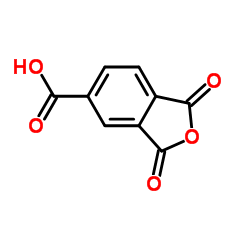Identification of contact and respiratory sensitizers according to IL-4 receptor α expression and IL-2 production.
Michèle Goutet, Elsa Pépin, Isabelle Langonné, Nelly Huguet, Masarin Ban
Index: Toxicol. Appl. Pharmacol. 260(2) , 95-104, (2012)
Full Text: HTML
Abstract
Identification of allergenic chemicals is an important occupational safety issue. While several methods exist to identify contact sensitizers, there is currently no validated model to predict the potential of chemicals to act as respiratory sensitizers. Previously, we reported that cytometry analysis of the local immune responses induced in mice dermally exposed to the respiratory sensitizer trimellitic anhydride (TMA 10%) and contact sensitizer dinitrochlorobenzene (DNCB 1%) could identify divergent expression of several immune parameters. The present study confirms, first, that IgE-positive B cells, MHC class II molecules, interleukin (IL)-2, IL-4 and IL-4Rα can differentiate the allergic reactions caused by high doses of strong respiratory (TMA, phthalic anhydride and toluene diisocyanate) and contact sensitizers (DNCB, dinitrofluorobenzene and oxazolone). The second part of the study was designed to test the robustness of these markers when classing the weakly immunogenic chemicals most often encountered. Six respiratory allergens, including TMA (2.5%), five contact allergens, including DNCB (0.25%), and two irritants were compared at doses of equivalent immunogenicity. The results indicated that IL-4Rα and IL-2 can be reliably used to discriminate sensitizers. Respiratory sensitizers induced markedly higher IL-4Rα levels than contact allergens, while irritants had no effect on this parameter. Inversely, contact allergens tended to induce higher percentages of IL-2⁺CD8⁺ cells than respiratory allergens. In contrast, the markers MHC-II, IgE and IL-4 were not able to classify chemicals with low immunogenic potential. In conclusion, IL-4Rα and IL-2 have the potential to be used in classifying a variety of chemical allergens.Copyright © 2012 Elsevier Inc. All rights reserved.
Related Compounds
| Structure | Name/CAS No. | Molecular Formula | Articles |
|---|---|---|---|
 |
trimellitic anhydride
CAS:552-30-7 |
C9H4O5 |
|
Skin sensitization induced Langerhans' cell mobilization: va...
2015-01-01 [Immunology 144(1) , 139-48, (2015)] |
|
Synthesis and properties of optically active nanostructured ...
2012-06-01 [Amino Acids 42(6) , 2187-94, (2012)] |
|
A rare nail polish allergen: phthalic anhydride, trimellitic...
2007-03-01 [Contact Dermatitis 56(3) , 172-3, (2007)] |
|
Prior exposure to immunosuppressive organophosphorus or orga...
2011-06-01 [J. Immunotoxicol. 8(2) , 170-82, (2011)] |
|
Changes in asthma-like responses after extended removal from...
2009-11-01 [Clin. Exp. Allergy 39(11) , 1746-53, (2009)] |